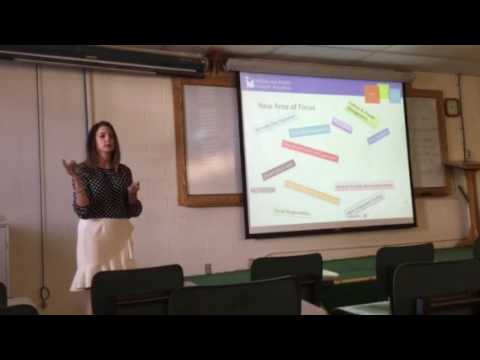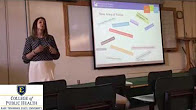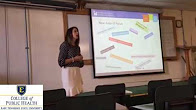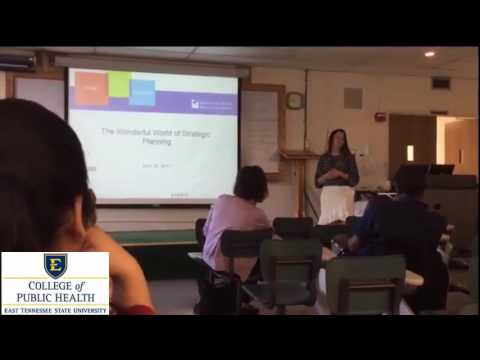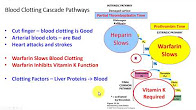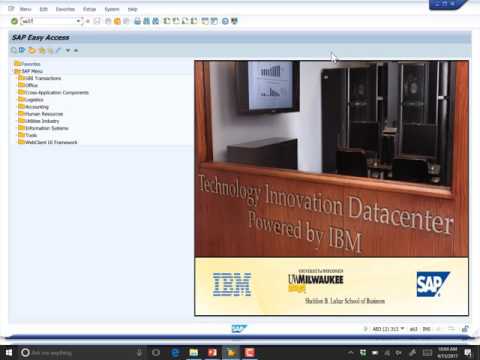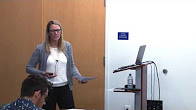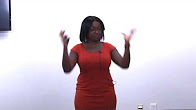 59:12 Pharmacogenetics - Victoria Pratt April 13, 2017 - Webinars for Health Insurers and Payers: Understanding Genetic Testing
59:12 Pharmacogenetics - Victoria Pratt April 13, 2017 - Webinars for Health Insurers and Payers: Understanding Genetic TestingMore: https://www.genome.gov/27563343/
 1:01:50 NHGRI's Oral History Collection: Interview with Charles Rotimi For more than two decades, Charles Rotimi, Ph.D., chief of the Metabolic, Cardiovascular and Inflammatory Disease Genomics Branch at the National Human Genome Research Institute
1:01:50 NHGRI's Oral History Collection: Interview with Charles Rotimi For more than two decades, Charles Rotimi, Ph.D., chief of the Metabolic, Cardiovascular and Inflammatory Disease Genomics Branch at the National Human Genome Research Institute(NHGRI), has studi...
 53:22 NHGRI's Oral History Collection: Interview with Current and Former NHGRI Directors - Part II In 2014 and 2015, the National Human Genome Research Institute (NHGRI) filmed a panel discussion with former directors James Watson, Ph.D. and Francis Collins, M.D., Ph.D., and current director Eri...
53:22 NHGRI's Oral History Collection: Interview with Current and Former NHGRI Directors - Part II In 2014 and 2015, the National Human Genome Research Institute (NHGRI) filmed a panel discussion with former directors James Watson, Ph.D. and Francis Collins, M.D., Ph.D., and current director Eri... 1:32:57 NHGRI's Oral History Collection: Interview with Current and Former NHGRI Directors - Part I In 2014 and 2015, the National Human Genome Research Institute (NHGRI) filmed a panel discussion with former directors James Watson, Ph.D. and Francis Collins, M.D., Ph.D., and current director Eri...
1:32:57 NHGRI's Oral History Collection: Interview with Current and Former NHGRI Directors - Part I In 2014 and 2015, the National Human Genome Research Institute (NHGRI) filmed a panel discussion with former directors James Watson, Ph.D. and Francis Collins, M.D., Ph.D., and current director Eri... 1:20:49 NHGRI's Oral History Collection: Interview with David Bentley David Bentley, Ph.D., is chief scientist at Illumina Inc., where he develops new DNA sequencing technology for fast, accurate sequencing of complex genomes. This oral history follows Dr. Bentley’s ...
1:20:49 NHGRI's Oral History Collection: Interview with David Bentley David Bentley, Ph.D., is chief scientist at Illumina Inc., where he develops new DNA sequencing technology for fast, accurate sequencing of complex genomes. This oral history follows Dr. Bentley’s ... 1:55:35 NHGRI's Oral History Collection: Interview with Maynard Olson Maynard Olson, Ph.D., professor of Genome Sciences and Medicine at the University of Washington in Seattle, is a major figure in genomics research, and his research involving large-scale genome ana...
1:55:35 NHGRI's Oral History Collection: Interview with Maynard Olson Maynard Olson, Ph.D., professor of Genome Sciences and Medicine at the University of Washington in Seattle, is a major figure in genomics research, and his research involving large-scale genome ana... 1:33:21 NHGRI's Oral History Collection: Interview with Ewan Birney Ewan Birney, Ph.D., co-director of the European Molecular Biology Laboratory’s European Bioinformatics Institute, played a vital role in annotating the genome of human, mouse, chicken and several o...
1:33:21 NHGRI's Oral History Collection: Interview with Ewan Birney Ewan Birney, Ph.D., co-director of the European Molecular Biology Laboratory’s European Bioinformatics Institute, played a vital role in annotating the genome of human, mouse, chicken and several o...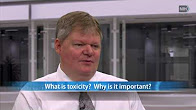 46:55 NHGRI's Oral History Collection: Interview with Howard McLeod Howard McLeod, Pharm.D., is the founding medical director of the Moffitt Cancer Center’s DeBartolo Family Personalized Medicine Institute and a senior member in its Department of Cancer Epidemiolog...
46:55 NHGRI's Oral History Collection: Interview with Howard McLeod Howard McLeod, Pharm.D., is the founding medical director of the Moffitt Cancer Center’s DeBartolo Family Personalized Medicine Institute and a senior member in its Department of Cancer Epidemiolog...
